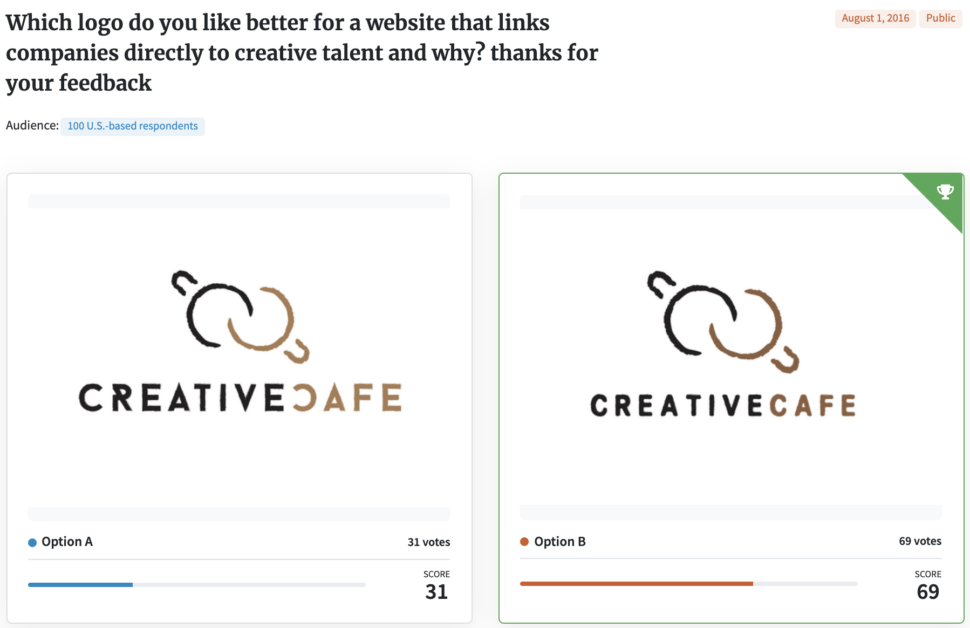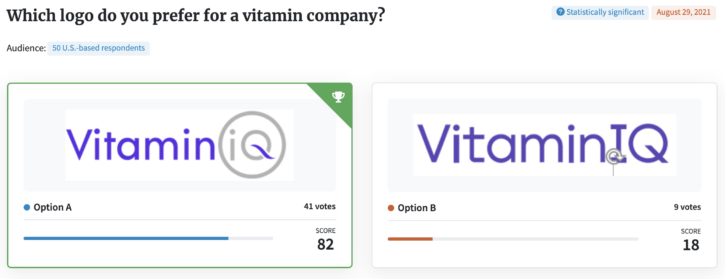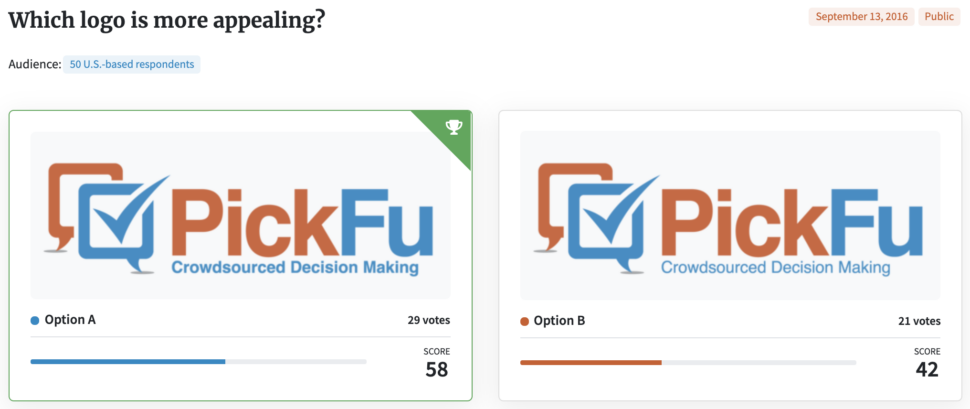One of the most popular uses for PickFu is to run preference tests on logo designs. If you’re in the process of creating a logo, learn from these past polls and make your tests the best they can be.
1. Decide how much you want to reveal
Your question is the heart of your PickFu poll, the basic information to which respondents react. When testing a logo, you should consider what, if anything, to tell them about your business or service.
This pollster was deciding between two logos and gave the respondents a basic overview of the business: an organic skincare line made from plants sourced from small farmers. In doing so, the pool of respondents, made up of females earning over $60k, were able to offer thoughts like:
- “… the flower speaks more to the product than the heart does.”
- “I see more of a plant focus in this logo since the design looks like a flower. Option B can be anything and doesn’t really tell me it’s about plants.”
- “The picture in choice A makes me think of plants. It feels like a mandala which I would equate with spiritual, natural, and exotic.”
However, there are times when you want the logos to speak for themselves. In these situations, asking the most basic question — “Which logo design is more appealing?” — enables you to see how respondents react without prompting, and glean whether they are reading similar messages in your design.
In this example, respondents offered reactions such as:
- “A seems more sporty and goes with the brand better.”
- “The honeycomb background in option A is very appealing and fits the sports brand style.”
- “seems more advanced and fitting to my assumption of what the logo is for.”
When writing your question, decide whether you need to include background information. If so, keep it succinct and objective.
Read our tips on writing unbiased questions here.
2. Start broadly, then go specific
The first step in logo testing is to test different designs. These initial tests can help you narrow down the best options. One quick way of creating multiple options is to run a contest on 99designs.
We ran a 99designs contest for the PickFu logo. Below is one of the polls we ran:
After several rounds of polling, the current PickFu logo with check marks and speech bubbles was chosen. We then ran more tests to decide on a winning color combination and tagline treatment, as below:
When choosing your logo design, start with a wide swath of options. Then, as you whittle down to your finalists, run more specific tests to decide on design elements like color or type treatment.
Here’s another example of a logo test where the basic design stayed consistent except for the type treatment:
3. Target your core audience
If your product or service is aimed at a particular demographic group, then those people are the most important to your business. Use demographic targeting in your PickFu poll to reach the same kind of audience that your business aims to attract.
Below, a men’s streetwear company was deciding on a logo. To run a better test, it targeted male respondents between the ages of 18 and 49.
Here’s a sampling of the responses:
- “Option B’s logo looks better for men due to its angles and simplicity. The logo for Option A looks like a strange combination between fierce and feminine at the same time due to how the eyes curl upwards, almost like stylized eyelashes.”
- “This logo is bold and will attract customers. It would make an impression for a clothing line. The outline and font make the logo clear and concise.”
- “[Option] A reminds me too much of the Minnesota Timberwolves logo.”
Keep these three tips in mind when deciding on your next logo, and if you’ve got additional helpful hints, leave them in the comments!
Try PickFu for free and get feedback on your logo.








